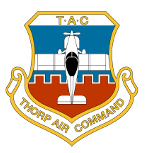I was wondering how many are using a Main Bus Diode like this:
http://www.periheliondesign.com/powerschottkydiodes.htmThe way I understand it. When the field collapses after energising (say a trim motor) you get an arc across the switch contacts. This causes early switch failure and a few other problems.
I was wondering how many Thorps are using a Diode? Is this fixing a real problem or creating another failure point. I haven't got to this point, but since there was a trim switch conversation. I thought I'd ask. I see D&C has them for about $20.
Cheap insurance or fixing something that isn't broke.
Bob MO







